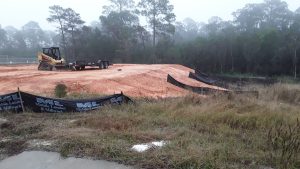
Save Our Soundside (SOS), headquartered in Gulf Breeze, began unofficially in 2014 when founders discovered 200 wooded acres on Soundside Drive faced rezoning for development, threatening endangered wildlife, native plants, springs, and wetlands that neighbors were promised would remain a nature preserve. Incorporated in 2018, SOS represents Florida Panhandle residents drawn to Santa Rosa County’s natural beauty—longleaf pine forests, Gulf beaches, Blackwater River kayaking, and diverse outdoor activities. Yet, with the population nearly doubling since 2000, this coastal paradise faces mounting risks from strengthening hurricanes and flooding risks to rapid development and often unsound building practices, such as fill-and-build. The organization monitors development impacts, researches land changes, writes op-eds, testifies at hearings, and partners with county groups to balance growth with environmental protection while addressing clear-cutting and ecosystem destruction through comprehensive planning.

Fill and build development being done in the area.
100-members strong, SOS is led by residents Dara Hartigan and Liz Pavelick, with one goal: to protect the habitat and waterways of the Gulf Coastal Lowlands for all. Self-proclaimed “watchdogs,” SOS calls attention to environmental violations that county and state agencies are not monitoring. The unique peninsula of south Santa Rosa County has been almost completely clear cut to make way for tract housing, rendering the environment and ecosystems nearly beyond restoration. They have called upon the Federal Emergency Management Agency to prohibit all construction and the use of fill within the 100-year floodplain; require all critical infrastructure be elevated; ban all industry in the 500-year floodplain; and ensure that new homeowners know flood risks by requiring states to pass disclosure laws. Recently Pavelick helped halt a rezoning request for 5 acres on protected wetlands and Hartigan was appointed to the county’s Land Development Code task force which focuses on erosion and sediment control, clear-cutting, and alternative subdivisions. For SOS, vigilance isn’t optional—it’s survival.